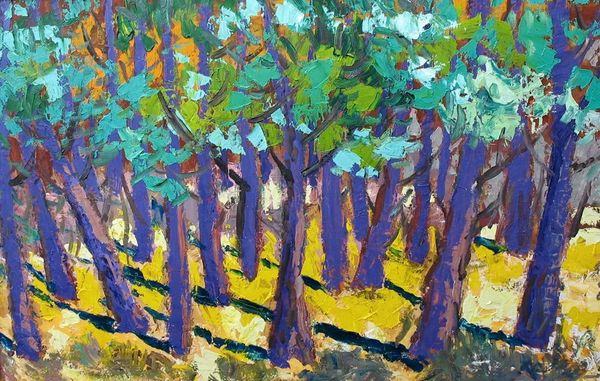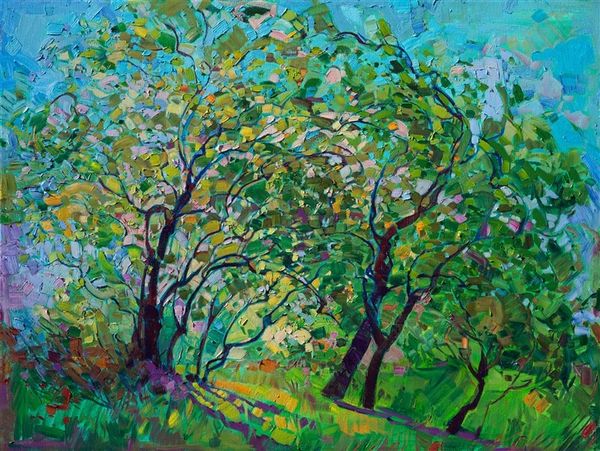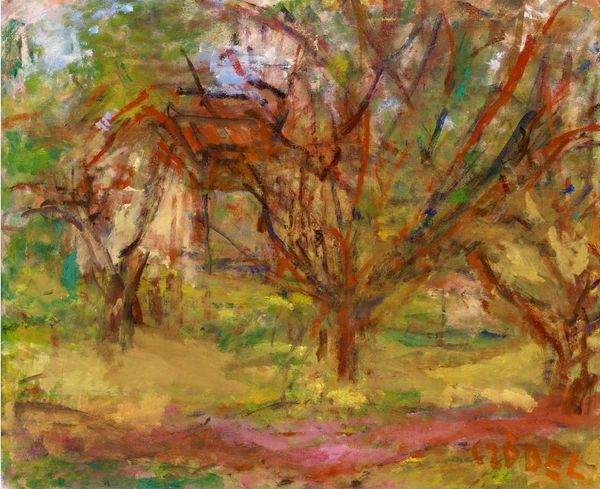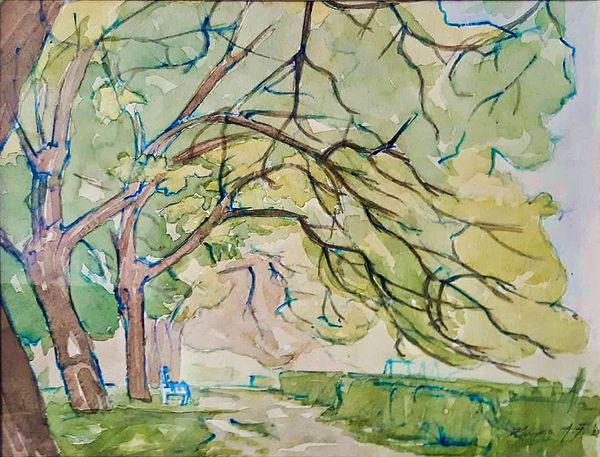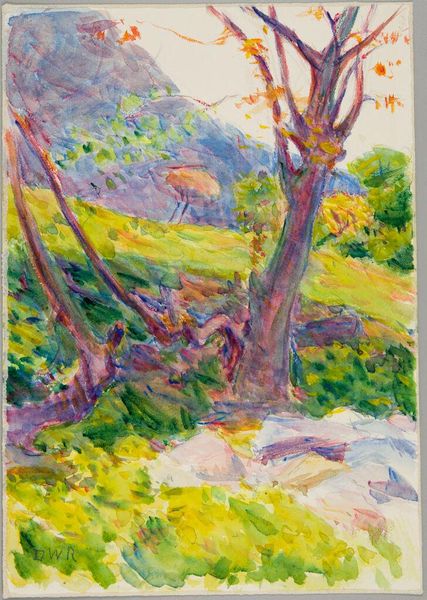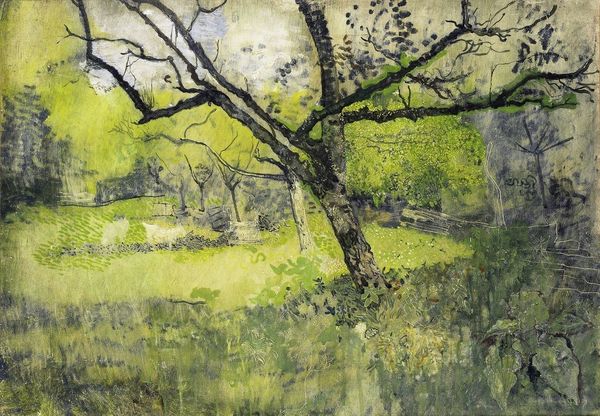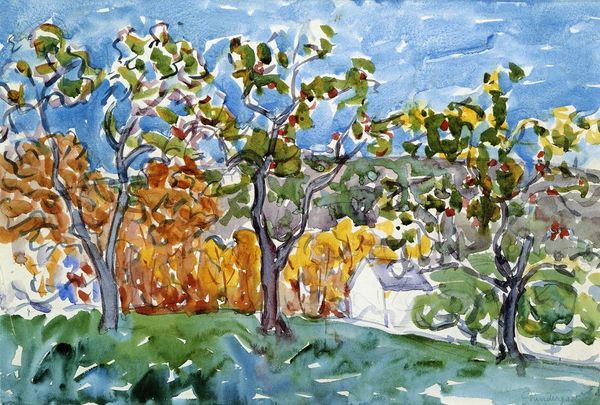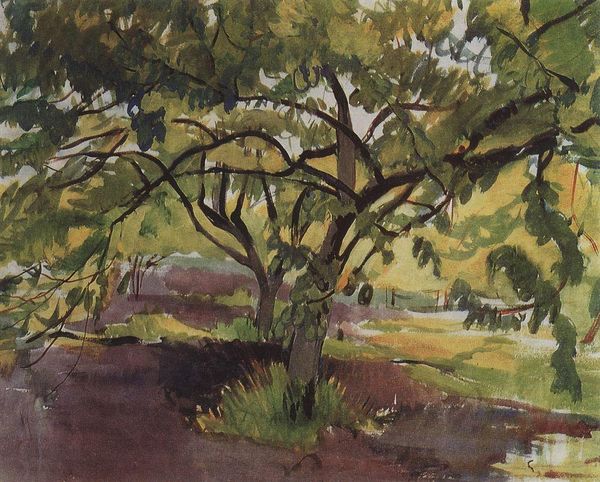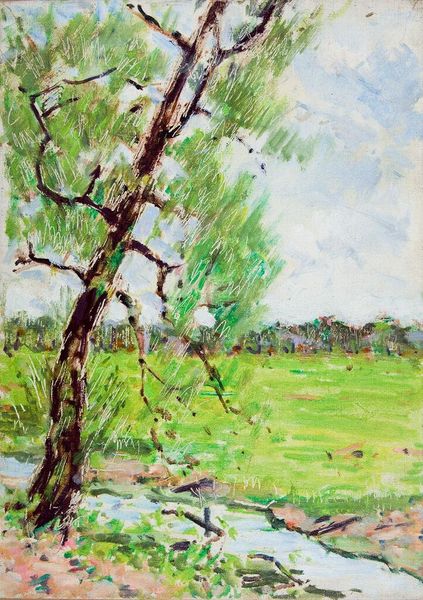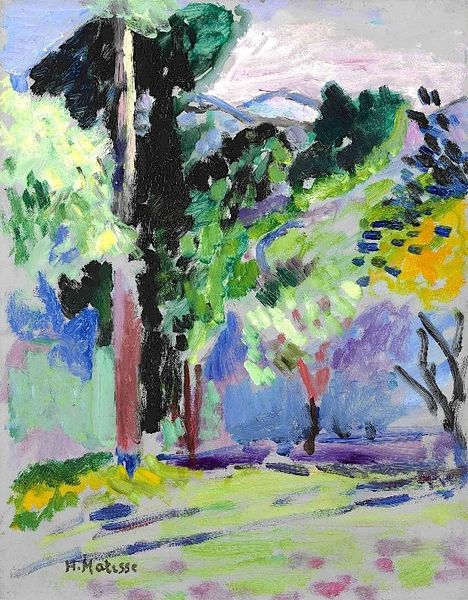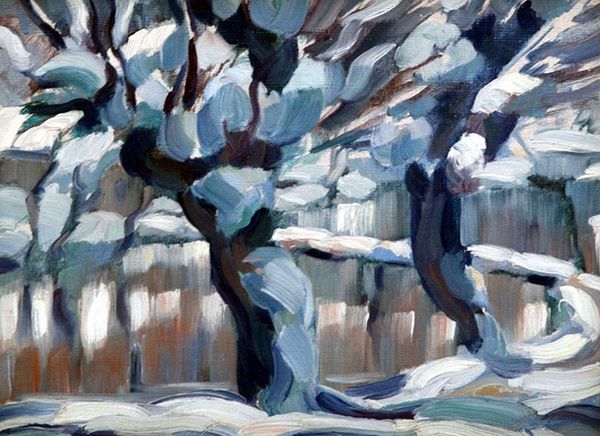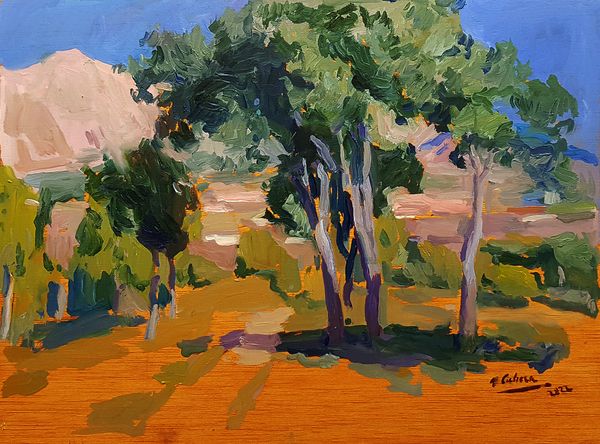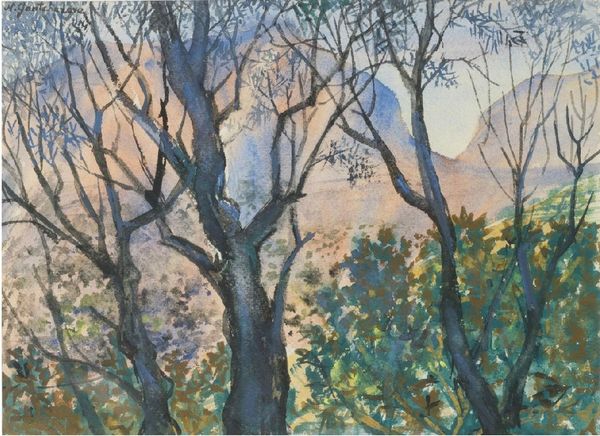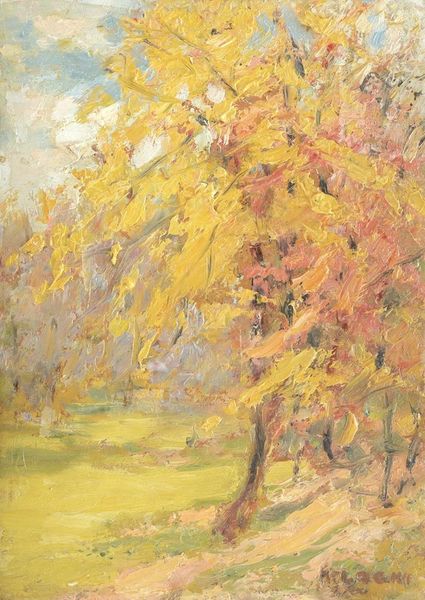
Copyright: Public domain US
Curator: Ah, "Orchard in Bloom. Neskuchnoye," painted by Zinaida Serebriakova in 1908. It's a watercolor, a lovely example of plein-air post-impressionism. Editor: My initial reaction? It feels utterly dreamlike, a space where the boundary between reality and memory blurs. The prevalence of yellows almost dissolves form into pure light. Curator: I find that interesting. Considering the political landscape of Russia in the early 20th century, with rising social unrest and impending revolution, a painting like this, focusing solely on natural beauty, could be interpreted as an intentional withdrawal, a refuge from the storm. Editor: Or, perhaps, it is an assertion. To create beauty and focus on growth amidst societal chaos could be a powerful, albeit subtle, form of resistance. Women artists at this time were particularly excluded from participating in larger conversations and this may have been the only way Serebriakova could get her message heard. The orchard could then become a site of personal liberation, a rejection of oppressive social structures. Curator: That's a compelling angle. It's true that Serebriakova faced considerable obstacles as a woman artist in a male-dominated art world. Considering the social history of exhibition and sales at the time, a bright and cheerful image was, ironically, more likely to garner attention and approval than a piece directly confronting social ills. Her position within the Russian artistic movements influenced the reception. Editor: Absolutely. And that inherent tension – the seemingly apolitical nature of the work juxtaposed against the deeply political context in which it was created – creates a space for critical engagement. The gentle wash of watercolor, the delicate blossoms - they speak volumes about resilience and the quiet power of beauty. Curator: I concur. Understanding Serebriakova's artistic formation alongside the Impressionistic styles from the West is necessary, especially regarding the accessibility to painting "en plein air." This movement made it acceptable, perhaps even preferred to be able to easily translate her feelings on the spot to canvas. Editor: Precisely. It pushes us to look beyond the surface, beyond the charming Impressionistic style. To consider how these orchards can symbolize something much larger, and how Serebriakova fits into discussions on gender, class and political agency. Curator: It enriches our understanding and reminds us of the importance of considering the social and historical underpinnings of art, doesn't it? Editor: Indeed. And how beauty itself can be a radical statement.
Comments
No comments
Be the first to comment and join the conversation on the ultimate creative platform.
